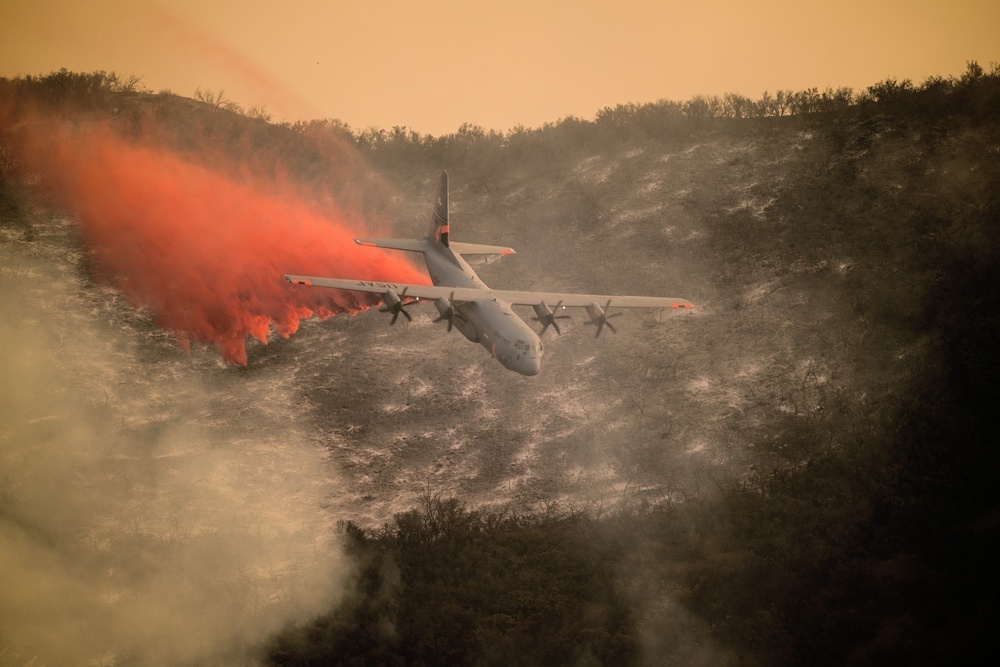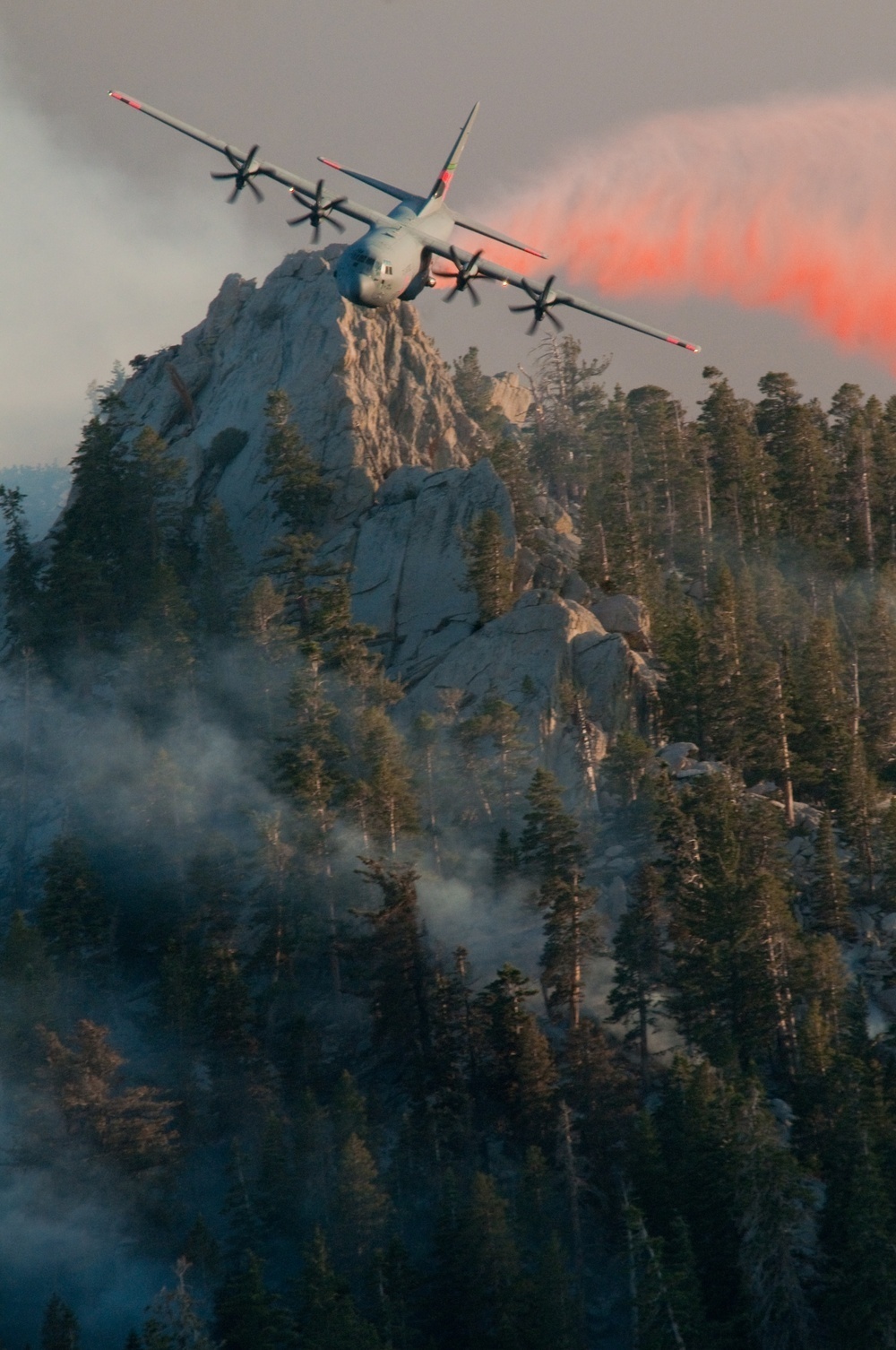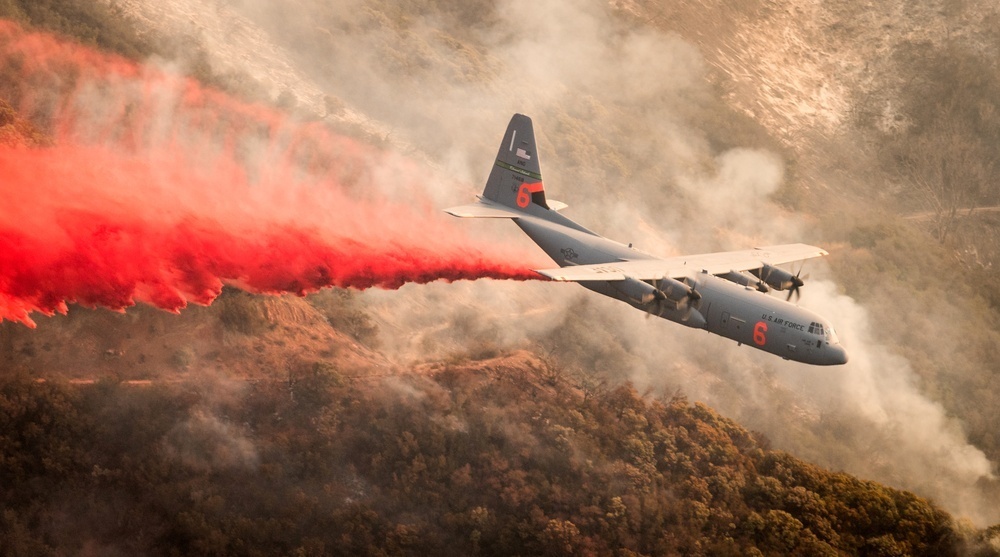CONR-1AF (AFNORTH)
Story by Tom Saunders
With a mix of favorable weather conditions in the western U.S. reducing wildfire activity and the increased availability of commercial airtankers, the USDA Forest Service released the final four U.S Air Force C-130 Modular Aircraft Firefighting System-equipped C-130 aircraft Sept. 29 marking the end of a 96-day support effort.
“The USDA Forest Service and other federal wildland fire agencies appreciate the continued military support through the MAFFS program, said Kim Christensen, Deputy Assistant Director for Operations for the USDA Forest Service. “They provide a valuable contribution to our wildland firefighting efforts and we’re proud to have them working alongside us. We also appreciate their focus on safety in all aspects of their operations.”
The year 2021 marks the 49th year for the MAFFS program, and it was a notable season for the MAFFS crews from the Nevada Air National Guard’s 152nd Airlift Wing, Reno, Nevada; the California Air National Guard’s 146th Airlift Wing, Port Hueneme, Calif.; Air Force Reserve Command’s 302nd Airlift Wing, Peterson AFB, Colo.; and the Air National Guard’s 153rd Airlift Wing, Cheyenne, Wyoming.
“This was an exceptional year that saw each unit contribute to a highly successful interagency firefighting effort to date,” said Lt. Gen. Kirk Pierce, commander, Air Forces Northern. “The sustained effort demonstrated the commitment and professionalism of the MAFFS teams. We appreciate the efforts of each Airman and want to thank their families as well, for supporting our Airmen in their relief efforts.”
First Air Force (Air Forces Northern), U.S. Northern Command’s Air Component Command, is the DoD’s operational lead for the aerial military efforts. USNORTHCOM’s priorities are homeland defense, mission assurance, force protection and Defense Support of Civil Authorities (DSCA), the latter of which includes wildland firefighting.
Not since 2012 had all eight aircraft been activated at the same time. During this year’s 96-day MAFFS activation, aircrews flew 945 sorties, dropping 2,583,204 gallons of fire retardant, the second-highest tally ever, next to 1994’s fire season that established records in all categories.
Additionally, aircrews conducted 929 drops, the third highest season tally, and 940.6 total flying hours, for the fourth-highest number.
The initial activation of MAFFS-equipped military aircraft occurred on June 25, a month earlier than in 2020 and the earliest activation of MAFFS-equipped aircraft in a decade.
The National Multi-Agency Coordinating Group (NMAC) made the decision to activate MAFFS in accordance with the DoD-USDA-DOI Agreement. With respect to the national situation, NMAC determines when, where, and how many MAFFS are needed.
“The availability of commercial airtankers enabled us to release the MAFFS back to their home stations, allowing them to resume priority work in their primary Department of Defense mission,” said Christensen.
When needed, the MAFFS C-130 units and crews essentially convert the C-130s into airtankers that provide a critical “surge” capability during the height of fire season. The C-130 aircraft are equipped with the U.S. Forest Service’s MAFFS, which can drop up to 3,000 gallons of fire retardant in less than 10 seconds across a quarter-mile line. The system slides into the back of the military aircraft, and retardant is released through a nozzle on the rear left side.
If additional MAFFS support is required this season, the crews and planes can be activated within 48 hours.



